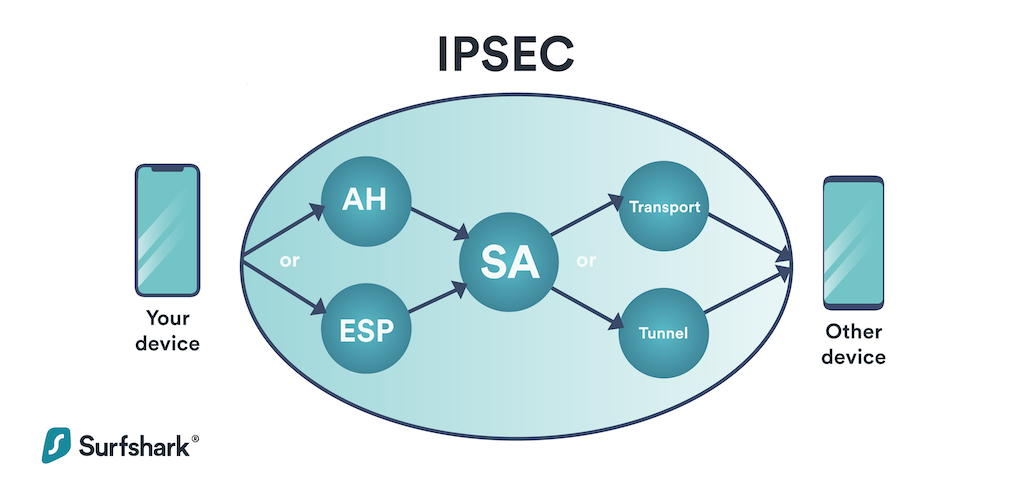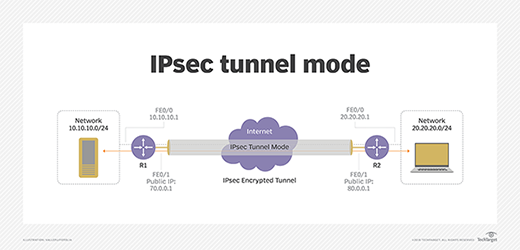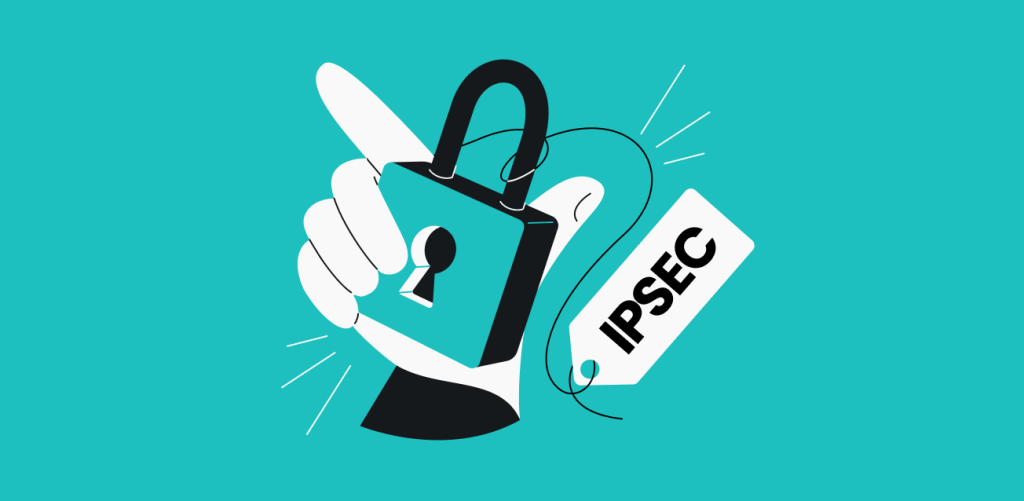Featured
Table of Contents
- – Ipsec: A Comprehensive Guide - Techgenix
- – Ssl Vpns Vs. Ipsec Vpns: Vpn Protocol Differen...
- – What Are Ipsec Policies?
- – Ssl Vpn And Ipsec Vpn: How They Work
- – What You Need To Know About Internet Protocol...
- – What Is Ip Security (Ipsec), Tacacs And Aaa ...
- – An Introduction To Ipv6 Packets And Ipsec - ...
- – Using Sauce Ipsec Proxy
- – Ssl Vpn And Ipsec Vpn: How They Work
- – Ipsec Overview
Ipsec: A Comprehensive Guide - Techgenix
Depending on the level of security needed, VPN companies can implement both or pick one over the other. SSL VPNs rely on the protocol.
Therefore, the security and applications of IPSec VPN and SSL VPN differ. With IPSec VPN, your traffic is protected as it moves to and from private networks and hosts; in a nutshell, you can safeguard your entire network. Thus, IPSec VPN is dependable for IP-based usages and applications. SSL VPN secures the traffic in between remote users.
Ssl Vpns Vs. Ipsec Vpns: Vpn Protocol Differences ...


We have actually all heard of SSL. SSL is what enables things like e-commerce to thrive. SSL lets us interact with websites firmly, however what do we do if we need to connect to another network privately instead of a website? That's when you use IPSec. A lot of new IT techs and system admins do not totally understand IPSec.
IPSec is a technique of safe and secure, encrypted interactions between a customer and a network. That interaction is sent through public networks such as the internet.
What Are Ipsec Policies?
That means that IPSec can potentially be more protected than other approaches of protected communication. IPSec connections are still made between the client and host through other networks, however. Those other networks are normally public networks like the internet, too. All interactions between the customer and host are encrypted.
Both the client and the host requirement to understand the personal encryption secret before connections can be established. That last bit is important. That's since the whole packet of information is secured during communications. That includes the packet header, too. You may think that all packets need readable headers to get to their destination effectively, and you would be.
Ssl Vpn And Ipsec Vpn: How They Work
ESP includes brand-new header information and trailers (comparable to headers but at the end of a packet) for transport while the real header remains encrypted. Each packet is validated too. The IPSec host will validate that each package of data received was sent by the entity that the host believes sent it.
IPSec is used to create a safe and secure method of interaction in between a customer and a host. The host is usually a private network, too. We understand how IPsec works, but what is IPSec used for?
What You Need To Know About Internet Protocol Security ...

Today, though, they can communicate over the open web using an IPsec connection. In numerous methods, an IPsec connection and a TLS or SSL connection are comparable. In many other ways, though, IPsec and TLS or SSL connections are exceptionally various, too.
Hence, IPsec connections start at the basic connection level of the OSI model. That indicates they are also prone to exploits in those layers, whereas IPsec might not be.
What Is Ip Security (Ipsec), Tacacs And Aaa ...
Because TLS and SSL connections use TCP, those secure connection types need to be worked out first. As soon as negotiated, the client and host will agree on a file encryption key, too. IPSec is various. Interaction is encrypted right away. The secret key used for file encryption needs to be shared between the customer and host independently before any interactions can be attempted.
The method utilized for crucial exchanges in IPsec is called IKEv1 or IKEv2. Since IPsec connections are encrypted right away, the whole header of the IP package can be encrypted, too.
An Introduction To Ipv6 Packets And Ipsec - Enable Sysadmin
Network admins need to take care to make allowances for those size differences in their network. IPSec is a method of safe and secure, encrypted communication between a customer and a host.
The host is typically a private network. IPsec itself is not a procedure but rather a handful of procedures utilized together. The procedures that IPsec utilizes start at Layer 3 of the OSI design, making IPsec potentially more safe than things like TLS or SSL.IPsec is generally used for VPNs.
Using Sauce Ipsec Proxy
Virtual private network (VPN) is an innovation for establishing a private network on a public network. It is a logical network over a public network such as the Web, permitting user information to be sent through a logical link. This is different from a traditional personal network, where user information is transmitted through an end-to-end physical link.
In this phase, the communicating parties use the Internet Key Exchange (IKE) procedure to develop IKE SAs for identity authentication and essential information exchange, and after that establish IPsec SAs for safe data transmission based upon the IKE SAs. Data transmission. After IPsec SAs are developed in between the communicating celebrations, they can send information over an IPsec tunnel.
Ssl Vpn And Ipsec Vpn: How They Work
If the ICVs acquired at both ends are the very same, the package is not tampered with during transmission, and the receiver decrypts the package. IPsec file encryption and authentication procedure Tunnel teardown.
That is, AH ensures that the source of IP packets is trusted and the information is not tampered with. AH, however, does not supply the encryption function. An AH header is appended to the standard IP header in each information packet. AH checks the integrity of the whole IP package.
Ipsec Overview
An ESP header is added to the standard IP header in each data packet, and the ESP Trailer and ESP Auth data fields are appended to each data package. ESP in transport mode does not check the integrity of IP headers. For that reason, ESP can not ensure that IP headers are not tampered with.
The following compares IPsec VPN and SSL VPN: Working layers of the OSI reference model, OSI defines a seven-layer structure for network affiliation: physical layer, information connect layer, network layer, transport layer, session layer, presentation layer, and application layer. IPsec operates at the network layer and straight runs over the Web Protocol (IP).
Table of Contents
- – Ipsec: A Comprehensive Guide - Techgenix
- – Ssl Vpns Vs. Ipsec Vpns: Vpn Protocol Differen...
- – What Are Ipsec Policies?
- – Ssl Vpn And Ipsec Vpn: How They Work
- – What You Need To Know About Internet Protocol...
- – What Is Ip Security (Ipsec), Tacacs And Aaa ...
- – An Introduction To Ipv6 Packets And Ipsec - ...
- – Using Sauce Ipsec Proxy
- – Ssl Vpn And Ipsec Vpn: How They Work
- – Ipsec Overview
Latest Posts
Best Vpn For Business
What Is A Vpn?
Best Vpns For Small Businesses (2023)
More
Latest Posts
Best Vpn For Business
What Is A Vpn?
Best Vpns For Small Businesses (2023)